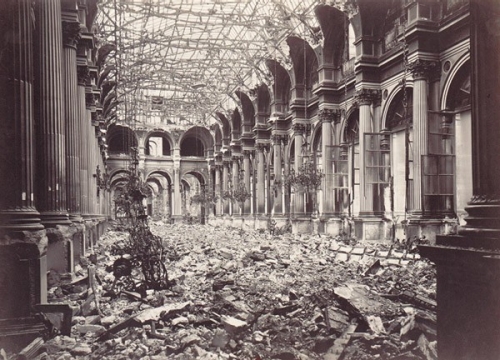The Franco-Prussian War (1870–1871) witnessed the collapse of the Second Empire, the end of monarchical rule, and the humiliating defeat of France. After a besieged and bombarded Paris surrendered to Prussian troops in January 1871, despair and anger grew among its residents, who had fiercely resisted the invading army. They bitterly resented the armistice negotiations between the fledgling French government and the newly proclaimed German Empire and feared restoration of the monarchy. Tensions erupted in March 1871 as citizens mounted an insurrection known as the Paris Commune. Revolutionary forces skirmished with government troops; fighting took place in the streets and on barricades erected throughout the city, particularly in the working-class quarters. By late May, the French army had crushed the resistance, summarily executing thousands of fighters and suspected sympathizers. In the following years, under the new government known as the Third Republic (1871–1940), Paris tentatively began to rebuild or replace many of the monuments damaged during both the war and the insurrection.
The Paris Commune: Ruins and Rebuilding

Ruins of City Hall, from the album Hôtel de Ville de Paris, 1871
albumen print from collodion negative
Bibliothèque nationale de France, Paris